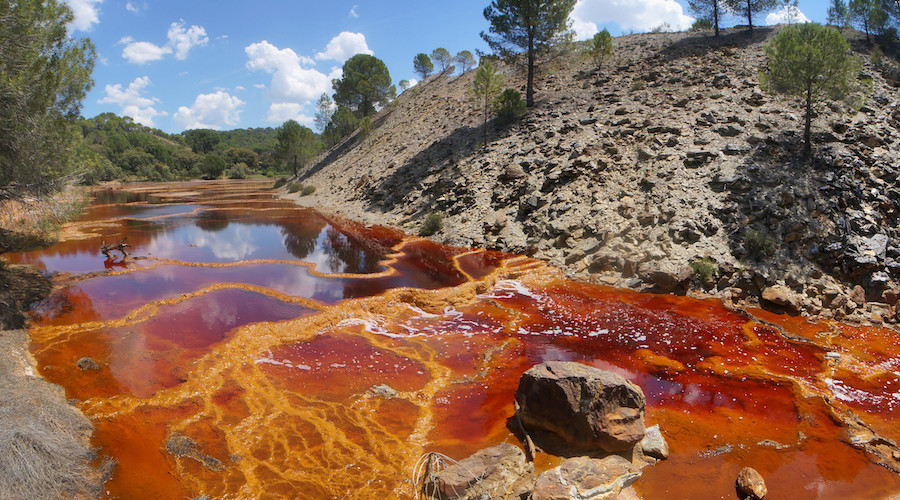Once the sorting process is done, the non-acid-generating waste should be placed on the outside of the waste rock pile as a protective layer to prevent water contamination. This, in turn, would reduce infiltration rates, seepage and the negative effect of acid drainage from the mine.
The researchers conceived this technique after an evaluation of the effectiveness of the site reclamation project that followed the shutdown of mining activities near the town of Tharsis, in the southern Huelva province.
Such rehabilitation strategy was focused on a waste rock pile known as Cabeza de los Gatos, whose slope was transformed by applying liming materials and then a layer of soil. Once this was done, trees and shrubs typical of the area were planted and a hydroseeding with a mixture of shrub and herbaceous seeds was applied.
According to the scientists, the methods applied at Cabeza de los Gatos had both positive and negative effects, with the latter outweighing the former.
“Twelve years later, woody vegetation covers the upper part of the rehabilitated area and provides a green visual landscape for the inhabitants of the village. Furthermore, it has been proved that the aerial part of the vegetation growing on this upper section does not present significant levels of potentially toxic trace elements,” Sabina Rossini Oliva, a researcher from the University of Seville, said in a media statement.
In contrast, the expert pointed out that the lower part of the slope is almost devoid of vegetation. Moreover, some of the plants growing at the base of the slope, such as gum rockrose, have cadmium concentrations exceeding the maximum tolerable level for animals, meaning they represent a toxicity risk for livestock.
“Our view is that this anomaly stems from acid drainage from the pile which has caused a sharp drop in soil pH at the bottom of the slope,” Rossini Oliva said. “This has increased the presence of potentially toxic trace elements and, thus, their accumulation in plant leaves. This adverse effect has manifested as lower vegetation cover.”
Given these results, the team believes their technique would be an easy-to-apply solution moving forward.




